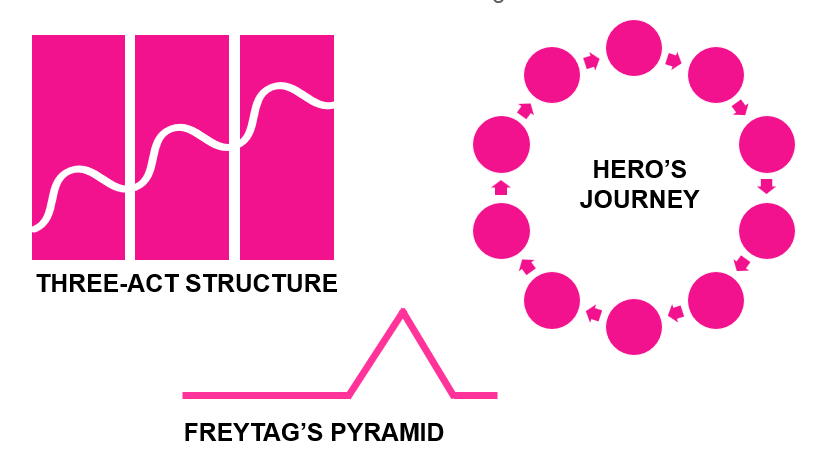We as learning professionals are always looking for ways to create engaging materials for our learners. We do that a lot with story, which can be a powerful memory aide. And as learning professionals, we are also constantly making sure our materials are precise and up-to-date. Since we are models of integrity and accuracy, we want to be able to spot falsehoods before they make their way into our materials. One way of spotting pseudoscience and falsehoods is by seeing if they’re “story-shaped.”
We are surrounded by stories. We see them in the books we read and the shows and movies we watch, but we also see them in games, in commercials, even in the way we interact with each other. We’re so tuned into stories that we’ll find ourselves rooting for an actor who’s been out of the limelight for thirty years to win the Oscar, because we love a good comeback story. We’ll see someone being reckless and proud and we’ll say to ourselves, “That person is headed for a fall,” because we’ve seen that story play out before. We see so many TV shows where someone is being hit by a bus while whistling on their way to work, we worry the same can happen to us. These are what authors like Kurt Vonnegut and Neil Gaiman call “story shapes.” They’re when events follow the familiar rise-and-fall pattern of a good story.

In fact, we’re so good at recognizing patterns in stories that it’s not uncommon for us to put a story shape onto something where it’s not as story-shaped as we would like it to be. For every arrogant person who gets put in their place, there are many that don’t. Most of us make it to work just find each day, whistling or no. The brain loves stories, so we’re sort of constantly on the watch for them, and we might spot something that our brain WANTS to follow a certain story shape.
One way to detect that something might be pseudoscience, or an outright falsehood, is to take a look at the story the anecdote is trying to tell. How well does it fit a story shape? What story is it trying to tell? And does it tell that story a little too perfectly? If so, we should look at it with a touch of skepticism and do some research to make sure it’s true.
Here are some examples:
Einstein was bad at math.
This anecdote, first published in Ripley’s Believe-it-or-Not in the 1930s, is a great story that talks of triumph, of overcoming the odds. It makes for a great story, but in reality, Einstein was a prodigy at math even as a child. (Source)
We only use 10 percent of our brains.
We use this factoid when we want to talk about untapped potential, about how we could be capable of so much if only we got out of our own way! In truth, we use different parts of our entire brain throughout our day-to-day lives, depending on the task. (Source)
Technology is changing our brains.
There are many people who ardently want this to be true, because it confirms the story they want to tell themselves of how our brains are in decline, and how we should put the screen time aside before it’s too late. While technology may be strengthening certain pathways in our brain, no permanent change is occurring. (Source)
When we want a story to be true, we’ll find evidence that helps prove that it’s true. So when you find yourself in front of an anecdote that tells a great story, and you want to include it in your learning materials, ask yourself: What story am I trying to tell with this? And does it fit that story TOO perfectly? Not every anecdote that tells a good story is false, but if it fits in a story shape nice and neat, it’s worth researching to make sure it’s true.
If you’d like to learn more, and you happen to be at the ATD International Conference and Expo in San Diego in May, come and see me!
